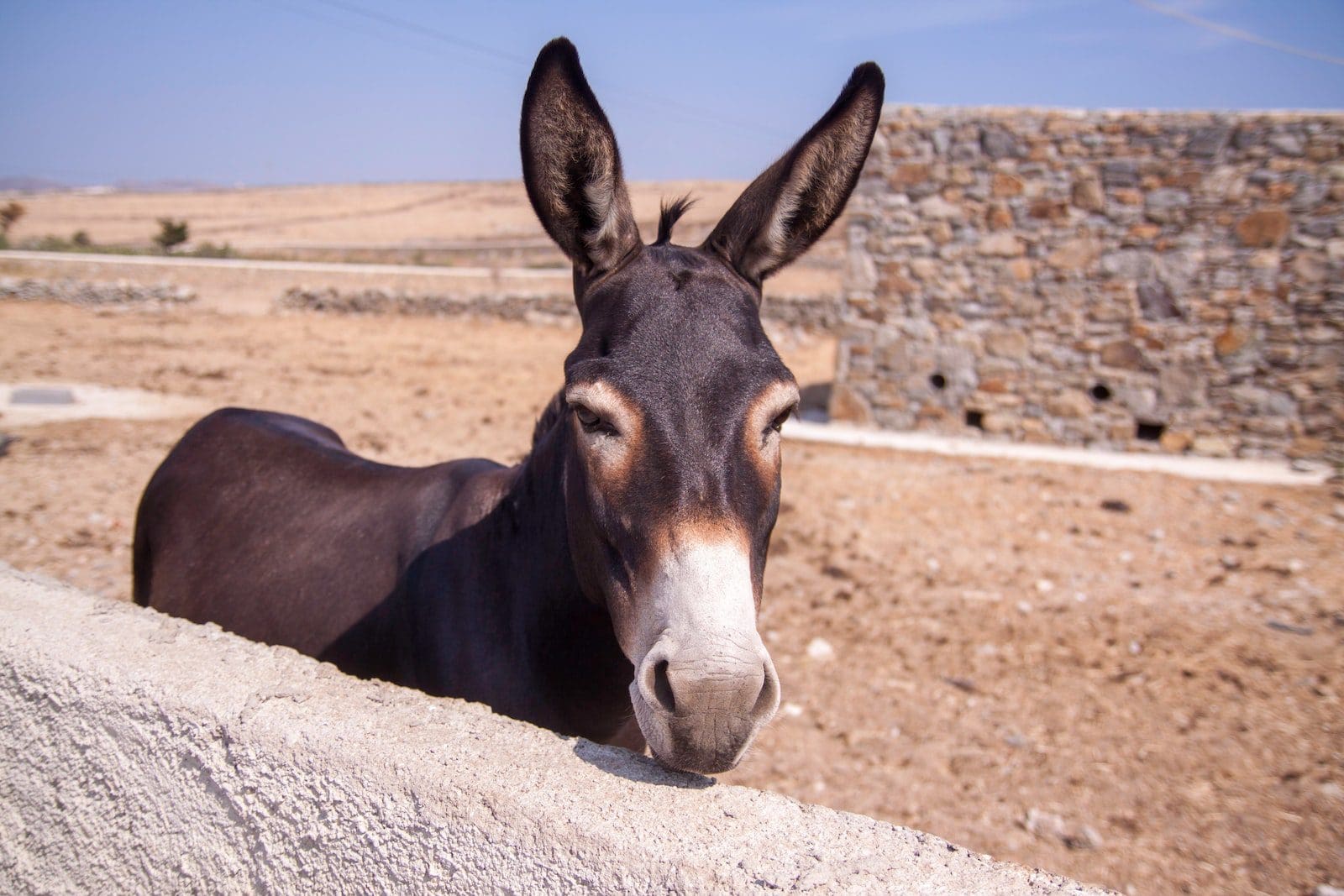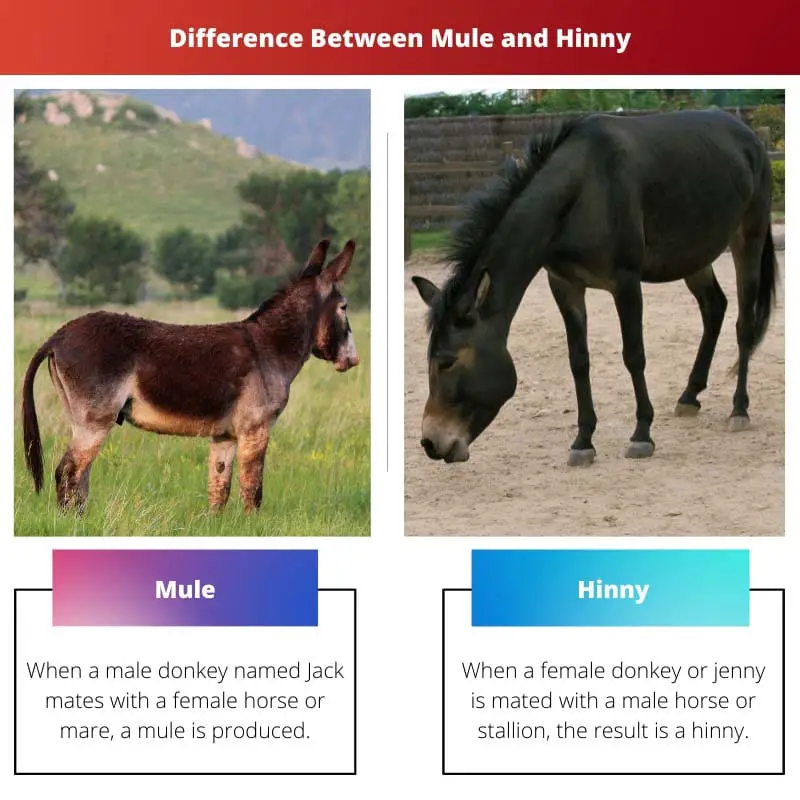Even though hinnies and mules have a horse as a parent, they are not called horses. However, the genus Equus includes hinnies, donkeys, horses, and mules.
Key Takeaways
- A mule is the offspring of a male donkey and a female horse.
- A hinny is the offspring of a male horse and a female donkey.
- While mules and hinnies are similar in many ways, they have different physical characteristics and temperaments due to their differing parentage.
Mule vs Hinny
Mule is the offspring of a female horse and a male donkey and is considered a domestic equine hybrid. It is used as a working animal due to its hard and docile nature. Hinny is a domestic equine hybrid birthed from a female donkey and a male horse, and it behaves more like a donkey.

Mules are significantly larger than Hinnies. Mules’ bodies have similar structural qualities to horses’ bodies. Mules have ears that are similar to those of a donkey.
The Hinnies’ physique is far too similar to those of donkeys. Hinnies have smaller ears than horses. In comparison to Mules, Hinnies are known to be more sensitive, stubborn, and reserved, as they inherit the temperament and characteristics of donkeys.
Comparison Table
| Parameters of Comparison | Mule | Hinny |
|---|---|---|
| Offspring of | A male donkey, known as Jack and a female horse or mare. | Jenny or a female donkey and male horse or stallion. |
| Stamina | Exhibit comparatively more stamina. | Exhibit comparatively less stamina. |
| Hybrid vigour | Possesses more hybrid vigour. | Possesses less hybrid vigour. |
| Size | Comparatively bigger than Hinnies. | Comparatively smaller than Mules. |
| Similar body to? | Horses | Donkeys |
| Similar ears like? | Donkey-like longer ears. | Horse-like smaller ears. |
| Characteristics | Quick learners, highly intelligent, bold, calm, stubborn, sensitive, loyal, affectionate and playful. | Sensitive, stubborn and reserved, less adventurous, more quiet, compliant, prone to spooking. |
What is Mule?
When a male donkey named Jack mates with a female horse or mare, a mule is produced. Mules have higher endurance than Hinnies. Mules are larger than Hinnies in comparison.
Mules are known for having better attributes than either of their parents, which is why they are referred to as hybrid vigour. Mules’ bodies are comparable to horses’ bodies in terms of structural qualities.
Mules, in comparison to horses, are rapid learners and consequently intelligent, courageous, and calm. However, until they gain trust in their owner, they can be difficult and sensitive.
Though hinnies and mules have a horse as a parent, they are not horses. Horses, donkeys, and mules, on the other hand, are all members of the Equus genus, including hinnies.

What is Hinny?
When a female donkey or jenny is mated with a male horse or stallion, the result is a hinny. In comparison to mules, hinnies have lower stamina. Hinnies inherit certain traits from their parents and hence lack hybrid vigour.
In terms of size and look, Hinnies are smaller than Mules. The Hinnies’ bodies resemble those of donkeys far too closely. Hinnies have smaller ears, which are akin to those of horses.
Because they inherit the temperament and characteristics of donkeys, Hinnies are known to be more sensitive, stubborn, and reserved than Mules. They become less daring, more peaceful, docile, and prone to spooking once they have gained their owners’ trust.
Hinnies and mules are bred from two separate species, as donkeys are not horses. Hinnies and mules are frequently bred for the optimum combination of donkey and horse characteristics.

Main Differences Between Mule and Hinny
- Mules exhibit donkey-like longer ears. On the other hand, Hinnies exhibit horse-like smaller ears.
- Mules are quick learners and are, thus, highly intelligent, bold and calm in comparison to horses. However, they can be very stubborn and sensitive also until they trust their master.




